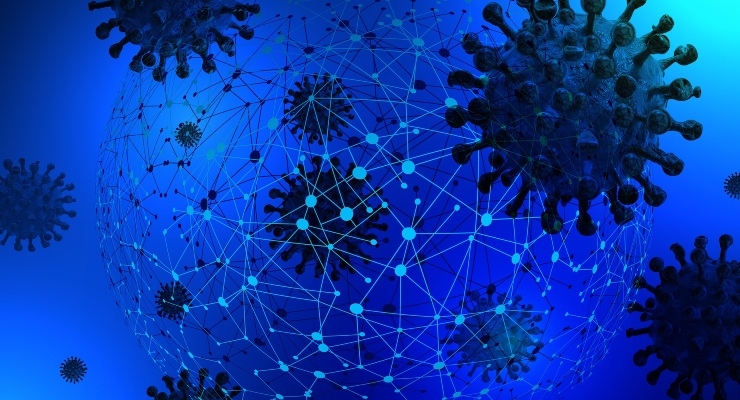COVID-19 has made it apparent just how quickly bacteria and viruses can spread, and also how silently.
It’s never been more important to keep products, equipment, and personnel as clean as possible. COVID-19 has made it apparent just how quickly bacteria and viruses can spread, and also how silently.
Manufacturers producing medical-grade equipment and supplies, however, have an even bigger responsibility to keep things sterilized. Professionals in the field relying on these items must be able to trust it’s coming to them in safe, sterile conditions.
The gear must be assembled, packaged, and shipped using the most reliable protocols. That way, when it’s unwrapped and put to use, there is absolutely no risk to the people using the equipment.
Undoubtedly, most manufacturers already have policies and protocols in place to keep the goods they are producing not only sterile, but also of the utmost quality. Still, it doesn’t hurt to go over some of the more tried-and-true ways of doing this. Here are some ways in which manufacturers can be sure they’re correctly sterilizing equipment before, during and after production.
1. Particle Accelerators
While the autoclave is a staple of the industry—it uses high-pressure steam to sterilize tools and components—it has limitations. Super-heated steam will melt or obliterate certain types of packaging. That doesn’t negate the fact that all medical goods must be sterilized, from the wrapping and tools to the outer packaging and boxes.
One of the more novel ways to achieve this is to use something called a particle accelerator, which bombards the item with a beam of electrons or X-rays. Where heat sterilization warps certain materials, like plastic, a particle accelerator does not. Gamma radiation is a similar form of sterilization, but it can also be hazardous to workers, especially when it comes to waste disposal.
Particle accelerators don’t have any of the same problems. They take only a moment and can sterilize entire surfaces, including outer packaging and plastic wrappings. The downside is that “e-beams,” as they are called, only have limited penetration. They’re only suitable for low-density, high-volume goods, such as syringes and bandages.

2. Gas Sterilization
Another more recent form of sterilization to enter the market is something called gas sterilization, which relies on the release of nitrogen dioxide (NO2). It’s a safe, low-temperature process that is also highly effective. It only takes about two to four hours total, including aeration, which results in total contaminant elimination. Furthermore, it’s safe for personnel, and the system can be established in-house at a relatively low overhead.
The FDA cleared this form of sterilization a few years ago. It’s an excellent alternative to conventional autoclave solutions.
3. Equipment Breakdown
One of the more obvious causes of contamination stems from inadequately maintained equipment and machinery. Many commonly assume that existing systems are working correctly when that’s not the case. Manufactured goods are coming out in poor condition, starting the entire process from a negative jumping-off point.
Everything from conveyor reliability to the breakdown of industrial process ovens should be a major concern for manufacturers. Both the necessary personnel and protocols should be in place to inspect, retain and replace—if required—inadequate equipment. Ovens, especially those used to form or sterilize instruments, tend to run at lower temperatures after breaking down. Since extremely high temperatures are integral to their operation, the results could be detrimental, or even disastrous.
Establish a proper system to inspect, maintain, and service equipment at every stage of the development, packaging and shipment process.
4. Safer Materials
Even with robust sterilization techniques and solutions, manufactured goods can become contaminated by various outside factors, such as the materials or surfaces they touch. Emphasis should be placed on the surrounding environment and materials to improve sterilization.
By utilizing supplies with little to no material additives—third-party testing can reveal the safest options—product contamination can be mitigated even more. Specific contaminants and heavy metals, for example, leave residues on items that can pose a risk.
Porex achieved something similar while working with Guangdong Xiangfeng Medical Technology. The company further improved the autoclave sterilization process by developing a robust, reusable filter that helped eliminate unwanted contaminants.
5. Vented Silicone
A more prevalent advancement in the medical packaging and sterilization field is thanks to the improved development of instrument trays. Vented silicone components can act as holders or frames for delicate instruments and tools. It serves multiple purposes. First, it keeps the tools in place and secure, preventing damage during the sterilization process. Second, the silicone venting provides access to the entire instrument, allowing sterilization to cover all surfaces and further reducing the risk of contaminants.
Manufacturers should be looking into the incorporation of vented silicone for packaging and unique shipments.
6. Damaged Films and Packaging
Another point of contention for manufacturers, especially when there’s a lot of automation involved, is the potential for machinery and fulfillment systems to damage packaging or protective films. Sharp edges along a production line could easily pierce plastic or film-based wrappings.
It’s up to manufacturers to audit systems, particularly those with moving parts, to protect critical touchpoints. As a movement, it’s something many manufacturers have already begun adopting. They can incorporate unique shelving and tray transport systems to cut down on potential sever points and protect the instruments and tools contained within packages.
As an organization, you should come up with a strategy or process for doing this within your facilities, if you haven’t already.
\
Thanks to COVID-19, it is vital manufacturers follow and maintain adequate sterilization techniques. It goes beyond the instruments and goods and stretches to every facet of continued operation. Employees should be wearing protective equipment, washing hands and surfaces, and following the necessary safety steps. From there, it’s essential to find effective ways to sterilize the goods and get them to medical professionals in a clean, safe manner.
Staying vigilant over the next few months and beyond will mean saving lives.

